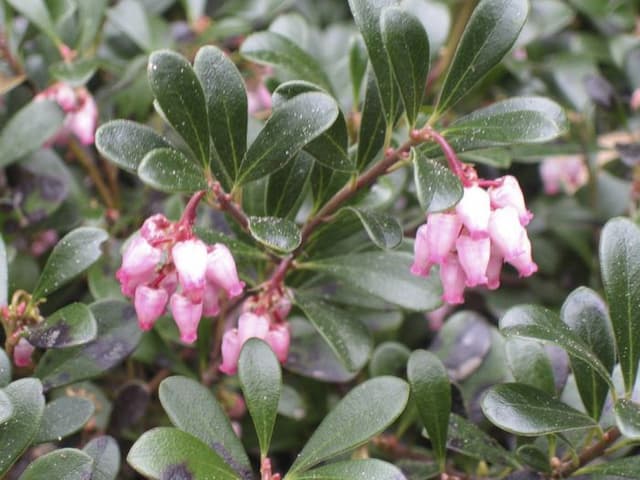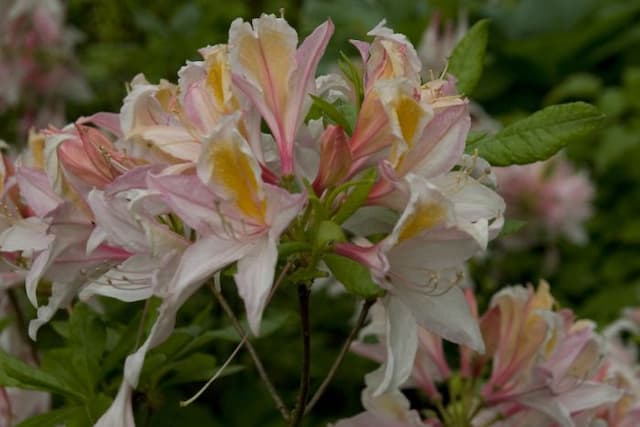Cross-leaved Heath Erica tetralix 'Con Underwood'
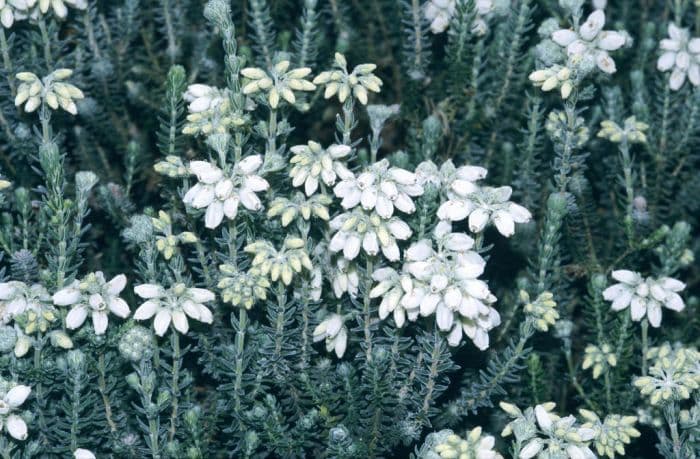
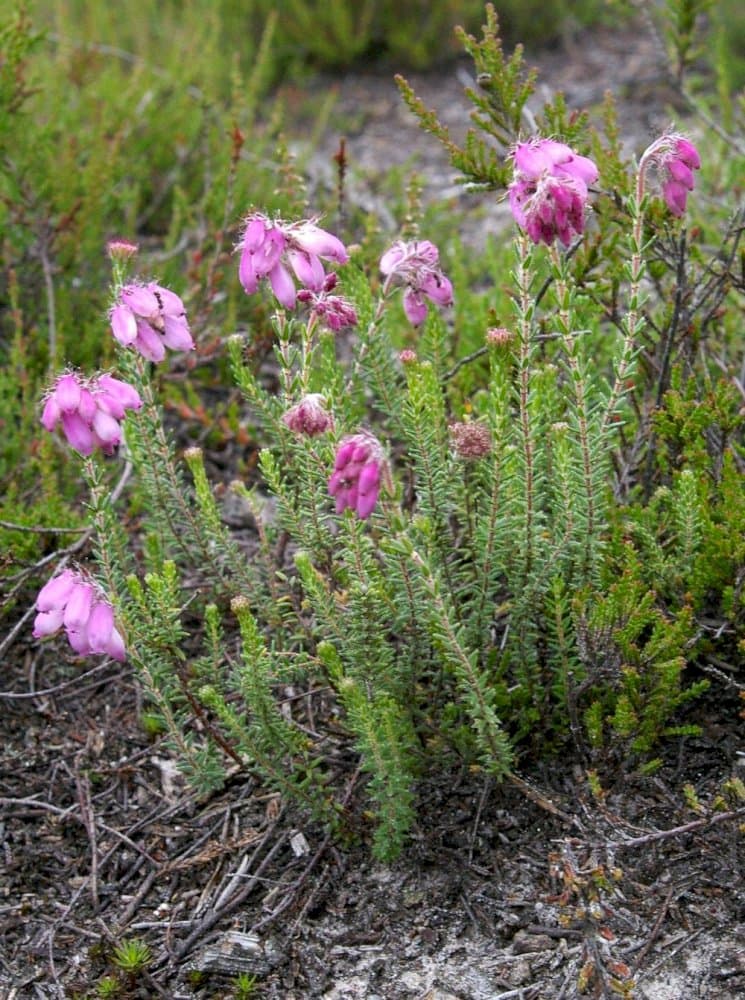
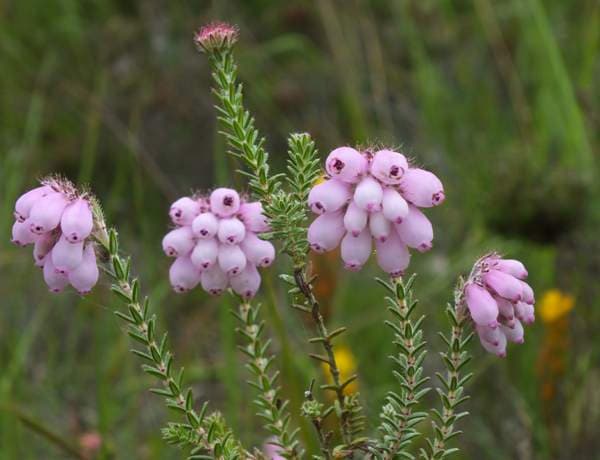
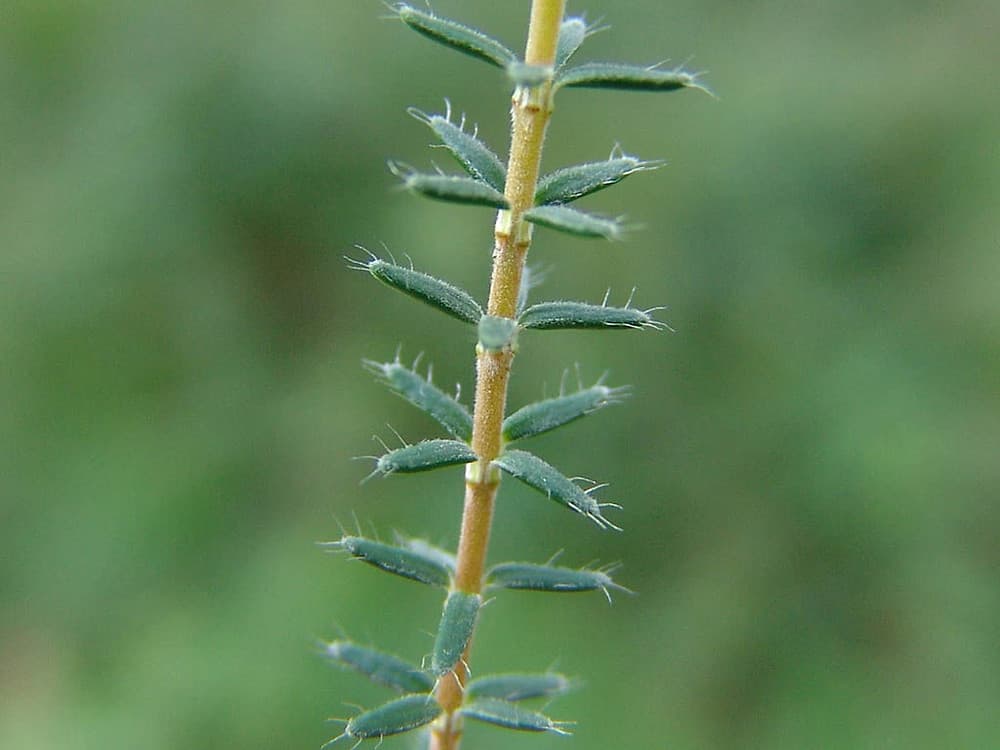
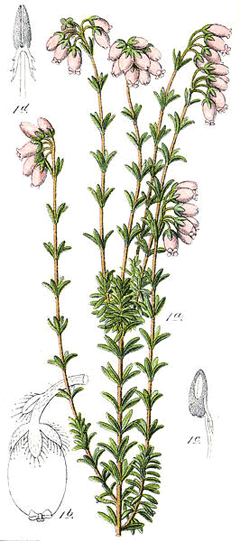
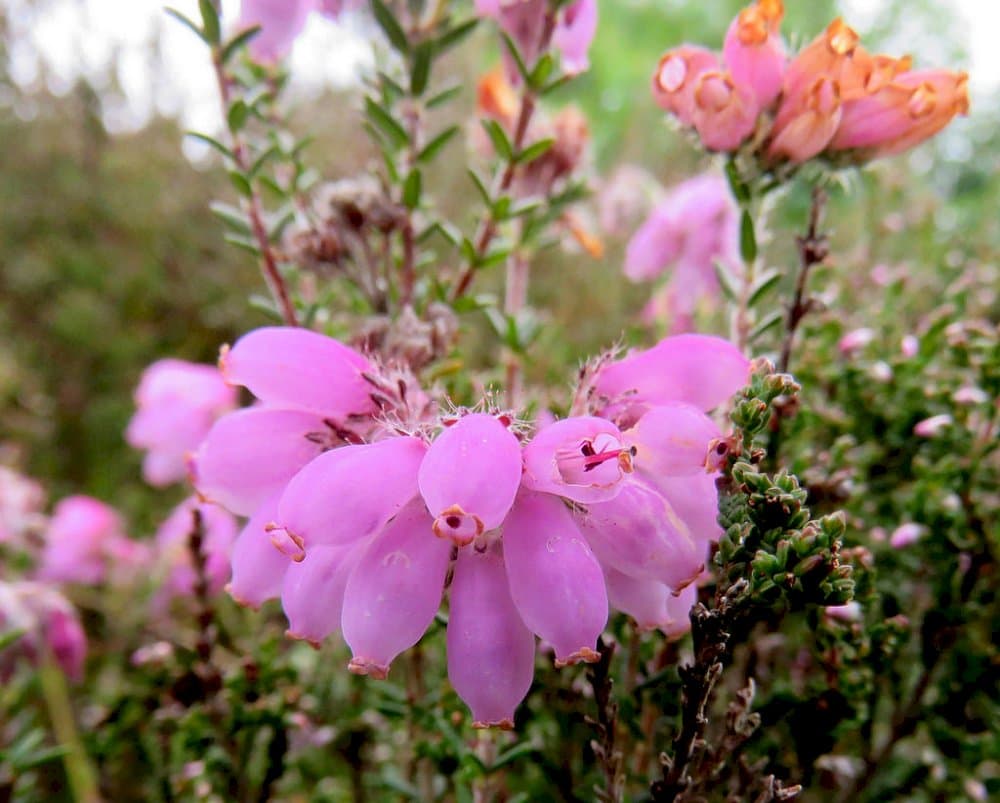

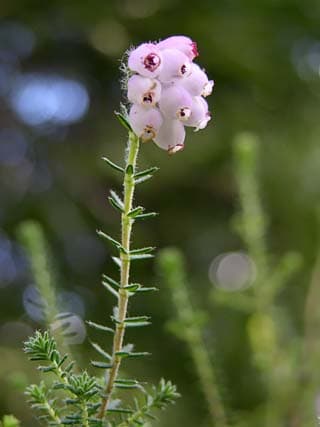
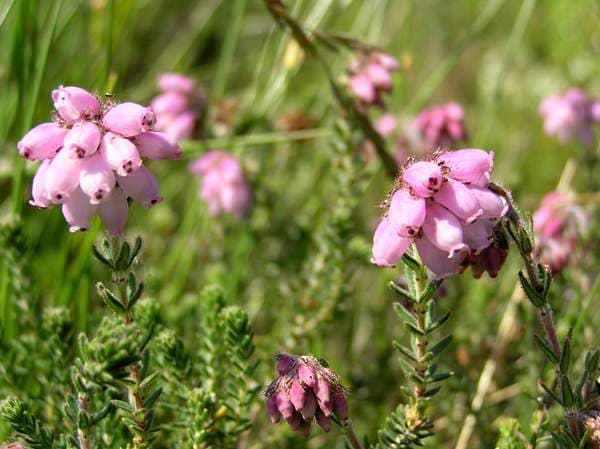
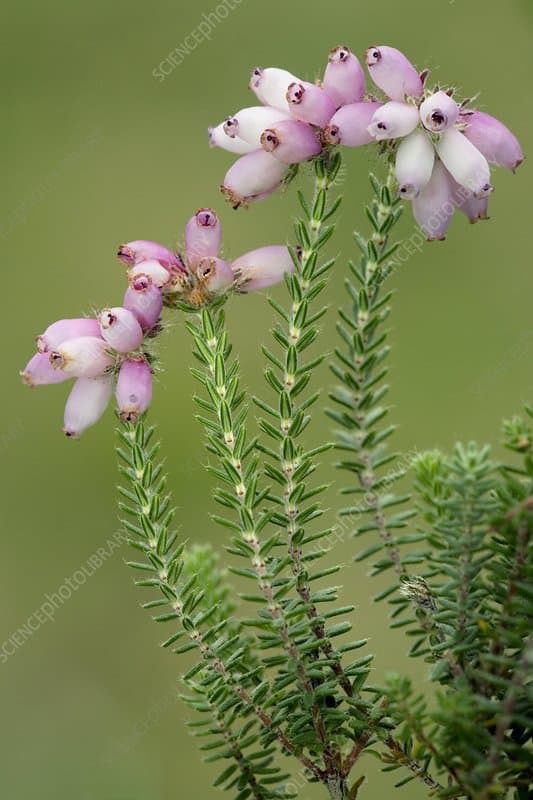
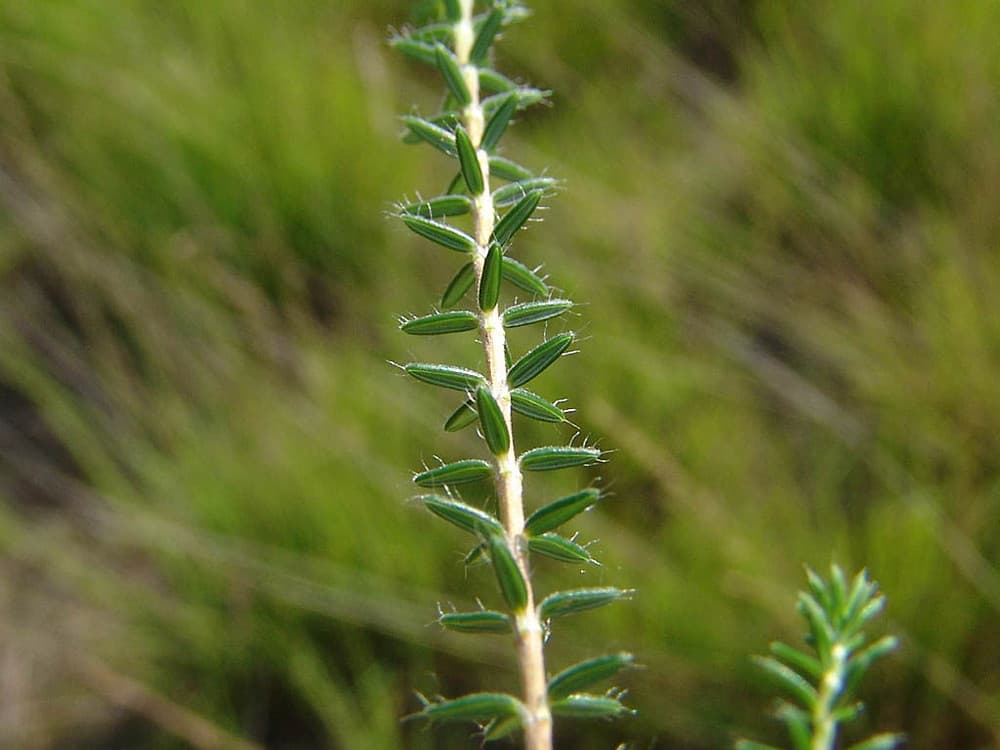
ABOUT
Erica tetralix 'Con Underwood', commonly known as cross-leaved heath, has a distinct appearance characterized by its evergreen nature and the beautiful arrangement of its foliage and flowers. The leaves of this plant are needle-like and grouped in whorls of four, which is where it gets its common name—the cross-leaved heath. These small leaves are a deep green color, providing a lovely contrast against the plant's flowers. The flowers of cross-leaved heath are particularly striking. They typically bloom in rich shades of pink and are shaped like small, bell-like urns. These blossoms cluster together at the ends of the branches, creating a delightful spray of color that can be quite eye-catching when the plant is in full bloom. The structure of each bloom comprises a corolla with a small opening, revealing the flower's inner parts if looked at closely. Cross-leaved heath has an overall bushy and dense habit, with its branches forming a compact mass. The plant's form has a natural elegance to it, with a tendency to spread and fill in areas, creating a swath of color and greenery that can be extremely attractive in various garden settings. The combination of the fine-textured leaves, the delicate flowers, and the plant's dense form makes Erica tetralix 'Con Underwood' a favorite amongst gardeners seeking to add a touch of wild beauty to their landscapes.
About this plant
 Names
NamesFamily
Ericaceae
Synonyms
Cross-leaved Heath, Bell Heather
Common names
Erica tetralix 'Con Underwood'
 Toxicity
ToxicityTo humans
Cross-leaved heath is the common name of Erica tetralix 'Con Underwood'. Generally, this plant is not considered toxic to humans. There are no well-documented cases of poisoning from the ingestion of this plant, and it is not typically listed among plants that present a hazard upon ingestion. However, as with any plant material, individual sensitivities can vary, and it is always wise to avoid ingesting parts of ornamental plants due to potential unknown individual reactions or the possible presence of harmful substances such as pesticides.
To pets
Cross-leaved heath is the common name of Erica tetralix 'Con Underwood'. Similar to its toxicity to humans, this plant is not commonly recognized as a toxic species to pets. There are no specific reports of poisoning in pets from the ingestion of cross-leaved heath. Nonetheless, pets might experience gastrointestinal upset if they consume large quantities of any non-food plant material. Always monitor your pet’s behavior and contact a veterinarian if you observe signs of distress after ingestion of any plant material.
 Characteristics
CharacteristicsLife cycle
Perennials
Foliage type
Evergreen
Color of leaves
Green
Flower color
Pink
Height
1 foot (30 cm)
Spread
1 foot (30 cm)
Plant type
Shrub
Hardiness zones
5
Native area
Europe
Benefits
 General Benefits
General Benefits- Attracts Pollinators: Erica tetralix 'Con Underwood' provides nectar and pollen for bees and other beneficial insects.
- Low Maintenance: Once established, it is relatively easy to care for and does not require frequent watering or fertilizing.
- Drought Tolerant: It can survive in dry soils, making it suitable for regions with water scarcity issues.
- Year-Round Interest: With evergreen foliage and long-lasting flowers, it provides visual interest throughout the year.
- Soil Erosion Control: The dense mat of roots can help stabilize soil and prevent erosion on sloped gardens.
- Habitat Creation: It offers shelter and nesting sites for various species of wildlife.
- Winter Hardy: Capable of withstanding cold temperatures and frost, making it suitable for cold climates.
- Landscape Design Versatility: Can be used in a variety of garden designs, including rock gardens, border edges, and groundcover.
 Medical Properties
Medical PropertiesThis plant is not used for medical purposes.
 Air-purifying Qualities
Air-purifying QualitiesThis plant is not specifically known for air purifying qualities.
 Other Uses
Other Uses- Erosion control: Erica tetralix can be used to stabilize soil in areas prone to erosion due to its dense rooting system.
- Crafts: Dried flowers of the plant are used in flower arrangements and wreath making for decorative purposes.
- Wildlife habitat: The dense foliage provides shelter and nesting sites for small birds and insects.
- Dye production: The flowers and stems can be used to create natural dyes for coloring fabrics or yarns.
- Water filtration: The plant can be used in constructed wetlands for treating wastewater due to its tolerance to high levels of nutrients.
- Garden aesthetics: Cross-leaved heath is planted as part of heather gardens for its ornamental value and attractiveness throughout seasons.
- Perfumery: In some cases, the essential oils derived from the plant can be used as fragrances in perfumes and scented products.
- Festive decor: During winter months, the evergreen and colorful aspects of the plant make it suitable for Christmas and festive decorations.
- Photography backdrop: Because of its picturesque form and coloration, Erica tetralix is often used as a photography subject or backdrop in gardens.
- Educational use: The plant is used in botanical studies and educational programs to demonstrate plant adaptation and heathland ecosystems.
Interesting Facts
 Feng Shui
Feng ShuiThe Cross-leaved heath is not used in Feng Shui practice.
 Zodiac Sign Compitability
Zodiac Sign CompitabilityThe Cross-leaved heath is not used in astrology practice.
 Plant Symbolism
Plant Symbolism- Survival and Adversity: Erica tetralix, commonly known as "Cross-leaved heath," often symbolizes an ability to withstand challenging conditions as it thrives in acidic soil and harsh environments where other plants might struggle.
- Protection: Historically, heather plants including the Cross-leaved heath have been thought to possess protective qualities, warding off harm and bad luck.
- Good Fortune: In some cultures, the Cross-leaved heath is believed to bring good fortune, and carrying a sprig of heather is sometimes thought to be auspicious.
- Solitude: The plant’s preference for growing in quiet, undisturbed areas can symbolize a love for solitude and self-reflection.
 Water
WaterThe Cross-leaved heath should be watered thoroughly, allowing the soil to become moderately dry between watering. Depending on the climate, this might mean watering with approximately one gallon per plant every week during active growing seasons, such as spring and summer. In the fall and winter, reduce watering but ensure the plant does not dry out completely, which might equal half a gallon every two to three weeks.
 Light
LightCross-leaved heath thrives best in full sun to partial shade. It should be planted in a spot where it receives at least six hours of sunlight daily, but it can also tolerate dappled shade, especially in regions with very intense afternoon sun.
 Temperature
TemperatureCross-leaved heath prefers cooler temperatures and can generally tolerate a range from about 20 to 70 degrees Fahrenheit. It can survive occasional dips below this range, but the ideal temperature for thriving growth is between 40 and 60 degrees Fahrenheit.
 Pruning
PruningPruning Cross-leaved heath is essential to maintain its shape and promote bushy growth. Prune lightly in late winter or early spring before new growth begins. This typically involves trimming back the tips of the branches to remove spent flowers and encourage branching.
 Cleaning
CleaningAs needed
 Soil
SoilCross-leaved heath thrives in acidic soil with a pH of 4.5 to 5.5. A mix of peat, sand, and loamy soil in equal parts is ideal to ensure proper drainage and aeration. Regularly check soil acidity, as this plant is sensitive to alkaline conditions.
 Repotting
RepottingCross-leaved heath should be repotted every 2 to 3 years. The best time to repot is in the spring when the plant is not in bloom, ensuring minimal stress and promoting healthier growth.
 Humidity & Misting
Humidity & MistingCross-leaved heath prefers a moderately humid environment. It thrives best in conditions that mimic its natural boggy habitat, so aim for a humidity level of around 50% to 60%.
 Suitable locations
Suitable locationsIndoor
Place in bright, indirect light with acidic soil and moderate humidity.
Outdoor
Plant in acidic soil with partial shade and shelter from strong winds.
Hardiness zone
5-9 USDA
 Life cycle
Life cycleErica tetralix 'Con Underwood', commonly known as Cross-leaved Heath, begins its life cycle as a seed, typically germinating in well-drained, acidic soils in early spring. Seedlings go through a juvenile phase, establishing a root system and developing their characteristic needle-like leaves. As the plant matures, it enters a vegetative growth stage, producing woody stems and forming a dense, shrub-like structure with evergreen foliage. During summer, mature plants produce pink to purple flowers that are pollinated by insects, leading to the development of seed capsules containing numerous small seeds. After seed dispersal in late summer or fall, the plant continues to grow vegetatively, with older plants gradually becoming woody and less prolific in flowering. Cross-leaved Heath has a perennial life cycle, capable of living and reproducing for several years before senescence sets in, leading to its eventual decline and death.
 Propogation
PropogationPropogation time
Spring-Early Summer
Propogation: Erica tetralix 'Con Underwood', commonly known as bell heather, is typically propagated by semi-ripe cuttings. The best time for propagation is late summer to early autumn. To propagate using semi-ripe cuttings, select healthy, non-flowering shoots from the current year's growth. The cuttings should be about 2 to 4 inches (5 to 10 cm) long, and the lower leaves should be stripped off. Dipping the cut end of the cutting in rooting hormone can help encourage root development. The cuttings are then placed in a well-draining potting mix, ensuring at least one leaf node, from which roots will grow, is below the surface. A warm, humid environment is maintained until the cuttings have rooted, which usually takes several weeks.

